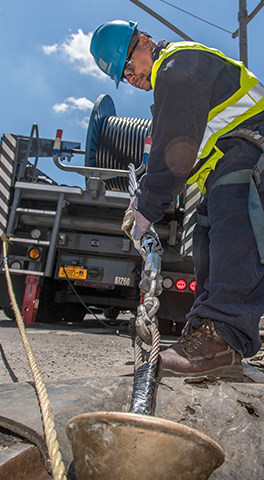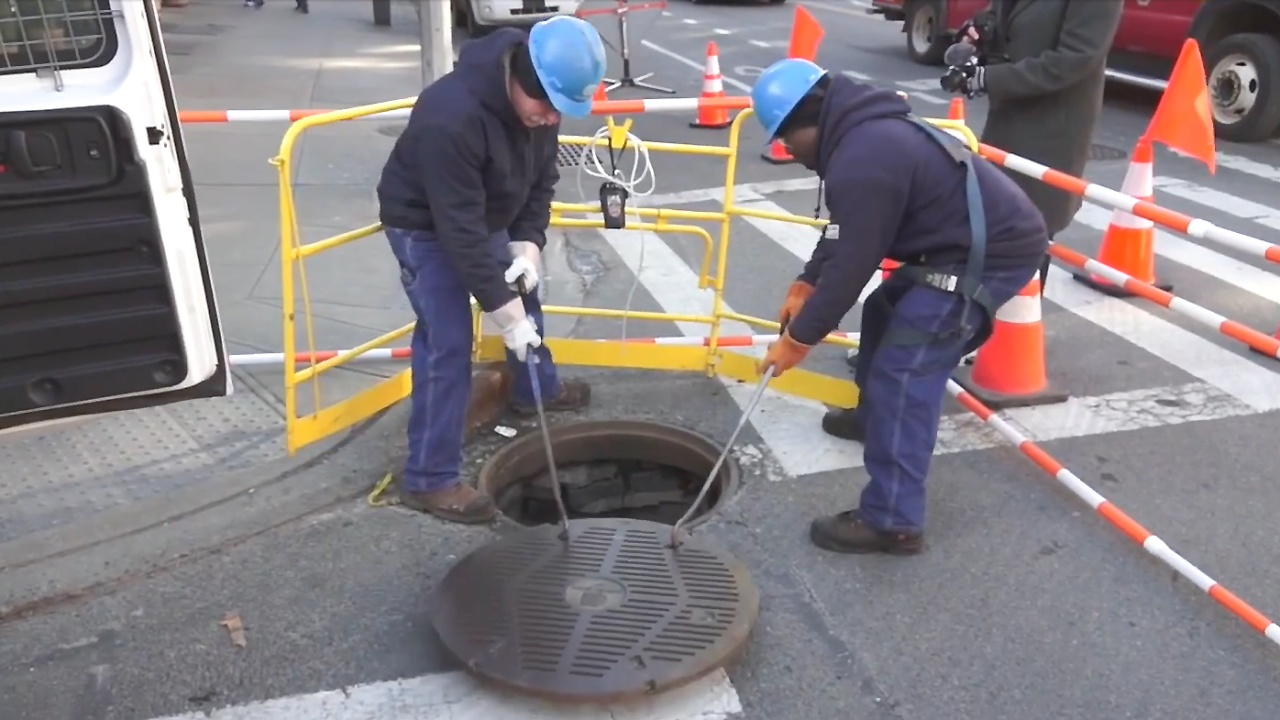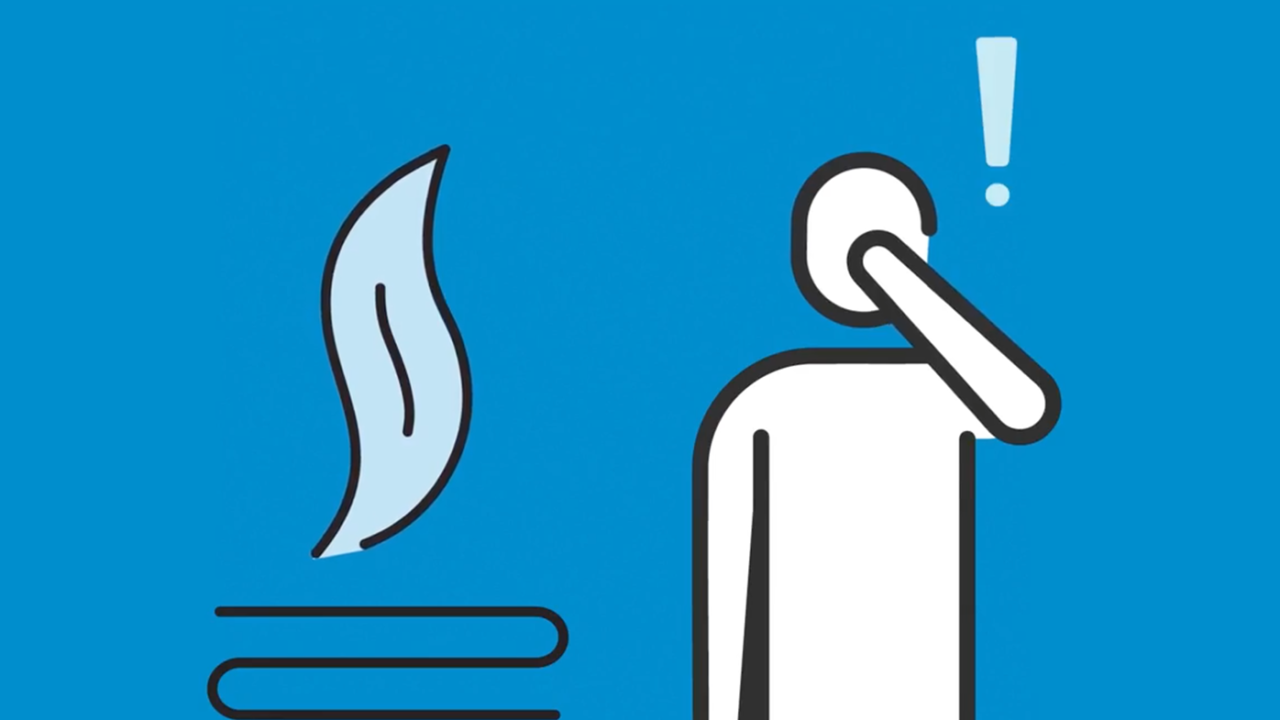
Safety & Environment
Public Safety
We invested more than $3 billion in 2019 to fortify our electric, gas, and steam infrastructure. This investment underscores our commitment to providing energy to millions of customers efficiently and responsibly while protecting the environment and keeping people safe throughout our service area.
Electric
 Con Edison continues to develop tools, techniques, and management strategies to improve safety, troubleshoot problems, and increase efficiency. Distribution Engineering and Electric Operations teams developed thermal imaging for scanning secondary assets in high-activity areas for incipient faults and introduced latched vented manhole covers. These efforts complement previously existing programs including stray voltage detection, cover venting, and underground inspection.
Con Edison continues to develop tools, techniques, and management strategies to improve safety, troubleshoot problems, and increase efficiency. Distribution Engineering and Electric Operations teams developed thermal imaging for scanning secondary assets in high-activity areas for incipient faults and introduced latched vented manhole covers. These efforts complement previously existing programs including stray voltage detection, cover venting, and underground inspection.
Con Edison’s underground networks are surveyed for contact voltage 12 times a year, using mobile detectors. In 2019, we found and eliminated 7,987 cases of contact voltage. Of those, 2,661 cases (33%) were on non-Con Edison equipment (streetlights, electric signs, and other structures). We performed more than 16,185 inspections of our underground system (manholes, service boxes, and transformer vaults).
O&R’s electric system testing is completed at least once every five years. In 2019, O&R found and eliminated eight cases of contact voltage, seven on company-owned and one on non-company owned equipment, and performed 36,490 inspections and 36,711 tests.

Gas
As part of our ongoing effort to reduce our carbon footprint and sharpen our focus on natural gas safety, we worked with the New York State Public Service Commission, New York City, and the Environmental Defense Fund to develop a program to identify and reduce emissions from small volume, non-hazardous leaks of methane gas. This effort is not mandated by regulations.
Historically, these non-hazardous leaks were prioritized and scheduled for repair based on the availability of resources and other factors such as age of the leak and complexity of the repair. In 2017 and 2018, we focused on reducing the number of non- hazardous leaks on the list by successfully prioritizing and eliminating 140 out of the top 150 gas leaks. We continued to experience historically low levels of total leaks through 2019 and reduce the time it takes to repair all leaks to historically low levels.
We have significantly increased investments that modernize our gas delivery system, further enhancing public safety and reducing leaks. The investments include accelerating our cast iron and unprotected steel gas main replacement program. In 2019, were placed 97 miles of such mains (the most we’ve ever replaced in one year). We continue to perform monthly gas leak patrols of our entire gas distribution system. Additionally, we have improved our emergency response procedures by working with the Fire Department of New York as well as coordinating with key city agencies. We are also continuing to work closely with the New York City Department of Buildings to establish requirements and protocols related to gas pipe inspections in buildings and the mandated use of residential methane detectors. In 2019 we completed a pilot program to install 9,000 natural gas detectors in buildings. The detectors send a signal to our emergency response center when a leak is detected. We will begin full deployment of these detectors starting in 2020.
Con Edison has a comprehensive, multichannel, and multilingual campaign to educate customers and the public at large—an estimated 10 million people across New York City and Westchester County—about gas safety and the urgency of reporting gas leaks. We reach customers primarily through direct mailings, youth outreach efforts, advertising, digital initiatives (such as email campaigns, conEd.com and social media), and community events.
We also continued our successful media campaign, Smell Gas, Act Fast, featuring videos and social media posts that inform customers on what to do if they smell gas. The videos are in English, Spanish, Chinese, and Korean.
Orange & Rockland
We have continued our focus on enhancing public safety by modernizing our gas delivery system. Investments to replace leak- prone pipe, primarily unprotected steel and Aldyl gas mains, have resulted in fewer incoming, outside leaks. In 2019, we replaced more than 24 miles of gas main.
We quickly respond to gas odor and carbon monoxide calls, and in 2019 we achieved a historical best response rate—responding to more than 92% of calls in 30 minutes.
By providing education to and oversight of those performing excavation work near our gas system, we experienced less damage than ever to our gas system. We continue to perform gas leak patrols of our distribution system, and have kept the number of open leaks low throughout the year.
As a result of a change in regulation, we are performing internal corrosion inspections and offered residential methane detectors free of charge to interested customers. Also last year, we launched a pilot program to install natural gas detectors that send a signal through the smart meter communication network to our gas emergency response center when a leak is detected.
O&R has a comprehensive campaign to educate customers and the public at large about gas safety and the urgency of reporting gas leaks. We reach customers primarily through direct mailings, advertising, digital initiatives, and community events.

Steam
We provide steam service to some 3 million people in Manhattan through an underground network of pipes. By generating steam primarily through co-generation, we provide efficient production and reduce emissions that would otherwise be generated by localized boilers and equipment. We focus on identifying ways to lower costs to customers, maintain high reliability, improve resiliency, and protect the environment.
Throughout 2019, a dedicated Con Edison team worked with various third-party investigators and experts to determine the factors which led to the Flatiron steam main rupture that occurred on July 19, 2018. The team analyzed numerous scenarios and was able to identify the root cause of the event. Based on this determination and associated contributing factors, Con Edison has developed its incident action plan, which includes the following items:
- A full assessment of the steam distribution system accompanied by a risk scoring model and internal inspection program
- Pilot projects to investigate enhanced sensing equipment to identify anomalies
- Enhancement of the remote monitoring system and its components
The action plan items listed above will each independently improve the reliability, resiliency, and overall safety of the steam system.
In 2019, Steam Distribution replaced 17 steel anchors with state-of-the art Inconel-625 anchors. Additionally, using capital funding, we have rebuilt 13 manhole structures, and replaced nine main valves. We installed 473 universal-type trap combinations with thermocouples, which allows for monitoring of uncontrolled steam releases from manholes. A program has been in place to replace all internally pressurized expansion joints in the system. In 2019, we removed and replaced the last two expansion joints that were left on the system for a total of 1,600 since the start of the program.
Throughout 2019, we strived for safe and efficient operations while meeting our customers’ needs and maintaining focus on continued bill reductions. We concluded the year with an overall system reliability rate of 100% and met a peak demand of 8.4 million pounds of steam on January 31, 2019.
